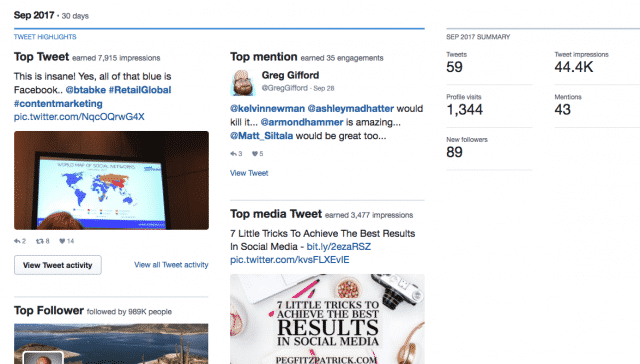As a digital marketer, you know that the right keywords lift up any business strategy to create genuine leads. Leads translate into conversions, and that’s what you and your website need most. Frankly, that’s what your business needs most.
So, you’re probably spending a lot of your time drumming up search term ideas and analyzing keyword sets that will “crush the competition”. But what you might be missing out on (and your competitors probably are, too), could really be hurting your ability to bring in new leads and convert them to sales. You might even be damaging the existing relationships you’re looking to maintain and grow longterm as well.
So what, exactly, are you missing? The customer.
If you’re not thinking about SEO through the lens of your actual customers and potential customers (all of them), then you’re not building a comprehensive approach with the power to multiply your sales and your company’s bottom line.
It’s time to think more like your key consumers, the people who are out there searching for you, or the ones who want to find you but haven’t, yet, and less like the bots.
What it takes to really think like them is building out templates of who they are and what they want most. These are called personas.
Creating effective personas for every current and prospective audience might sound like a lot of extra steps you don’t want to take, but stay with me here. Doing research on your persona types will result in big wins for your keyword and SEO strategy, and this effort will pay off tenfold once you build them into user journeys.
If you haven’t yet considered user journeys, now is the time to start. Like strong personas, solid journey maps will guide your customers all the way from from “search to sold,” and then bring them back for more.
I’ll walk you through crafting the right keywords for your audience sets using what you already know about them, and how these personas can easily translate into user journeys across all your digital channels. Do it right and you’ll surpass both your SEO and sales goals.
What Are Personas, and Why Do I Need Them?
Personas are kind of a fancy way of saying “characters.” No, you’re not a fiction writer, but you are a marketer for your business. That means you need to think of your different audiences as different characters in your business’ story.
Each persona is really just a detailed bio of one of your customers. Some businesses even create huge cardboard cutouts of their personas to help them remember who they are and what they want, and then stand them up around the office. You don’t actually have to do that, but it’s not a bad idea, either.
With all your personas in place, you’ll be better able to adjust your content to target them and their interests.
Choose Your Star Personas
So, how do you begin? Start with an easy list to fill in about the business’ audience demographics:
- Age
- Gender
- Geography
- Income
- Occupation
- Education level
- Marital Status
- Parental Status
- Number of Children
Think about their interests and preferences, too:
- Hobbies
- Pets
- Political affiliations
- Religious values
- Lifestyle
- Priorities
- Aesthetic taste
- Obstacles
- Fears
- Assumptions
Next, you’re ready look at your existing analytics to learn about your current audience demographics and interests. You can use your Google Analytics data to sort through search queries to inform your persona research.
Once you look closely, some common themes will begin to emerge. You can organize them by different interests and geographic locations.
After that, you’re ready to create some draft personas. If you have a site selling kitchen gear, some examples might be: “Professional chefs working in Atlanta” or “Novice cooks looking for gadgets under $50.”
You might end up with 20 different personas, or you could just have two or three. It all depends on what your data tells you, of course.
Use Keyword and Social Research to Go Deeper
Next, you can take your research a step further by looking at the social referrals your personas use. You’ll probably catch some patterns between the persona types and what channels brought them to you.
Using the kitchen shop example again, perhaps Twitter is bringing in your more experienced chefs, whereas Facebook is referring more of the novices.
Look more closely at each of these social channels for even deeper intel and speak directly to your followers in their unique way. Use the analytics each channel provides, like Facebook’s Graph Search, to learn more about your page’s fans.
Twitter and LinkedIn both have really good analytics, too. Just look at the “Your followers and their interests” sections.
Some other great tools to consider include Followerwonk, which looks at your Twitter followers’ bios to grab good keywords. Or you might think about creating a user survey with Survey Monkey and sending it out to your email lists and social followers to get more detailed info.
A really good and often untapped channel is Quora. If you haven’t checked it out, do it now. It’s where people go to get really specific answers to really specific questions. Chances are, you have a persona or two visiting Quora, and this will help you understand them much better.
Build Them Into A Journey or Two
Now that you have some personas built, you can begin to integrate them into your user journeys. If you already have a mapped out buyer journey, great. This will help you edit or round it out.
If you haven’t yet mapped out any journeys, now’s the time.
You might be wondering, “What is a user journey?”
There are variations on this, but the classic journey looks like this:
- Awareness: Initial understanding of a need/problem. Early/light research happens here.
- Consideration: Heavy research. Tons of search queries fire off on users’ keyboards. Reviews are carefully read and thought through.
- Decision: A choice, and a sale, is made.
- Retention: The customer comes back for repeat business.
Now that you understand the main stages, you can use your personas and research to expand your keyword list and enhance your journey.
First, think about the search terms each of your personas will use during every stage of the process.
- How are they initiating their research during Awareness?
- What are they asking during Consideration. This is most likely to be your “make it or break it” stage?
- When they’re ready to decide and make a purchase, what keywords bring them to you?
- What searches bring existing customers back again?
Remember to use all the data you’ve attained during your persona research to think these questions through.
One persona will be looking at Facebook during the Consideration stage. Another might only use Google. Yet another could be asking questions on Quora or reading Amazon reviews.
Putting it all together gives you user journeys for each persona and how they behave, which will make your keywords so much more effective for all your audiences. You can then weave them into your content strategy across your web, social and email platforms.
Once your content is updated to include the right keywords your personas are seeking, you can map out digital campaigns that bring users through each stage in their journey with you, ultimately bringing them to the Decision stage exactly where you want them: on your website.
Some journeys start with emails, make a pit stop at social media, and end with your website, and also zig-zag in between, but it all depends on your personas and what you’ve learned about how (and where) they research and make decisions.
Now tell us: How have you built your personas, and are you using that data to build user journeys?


